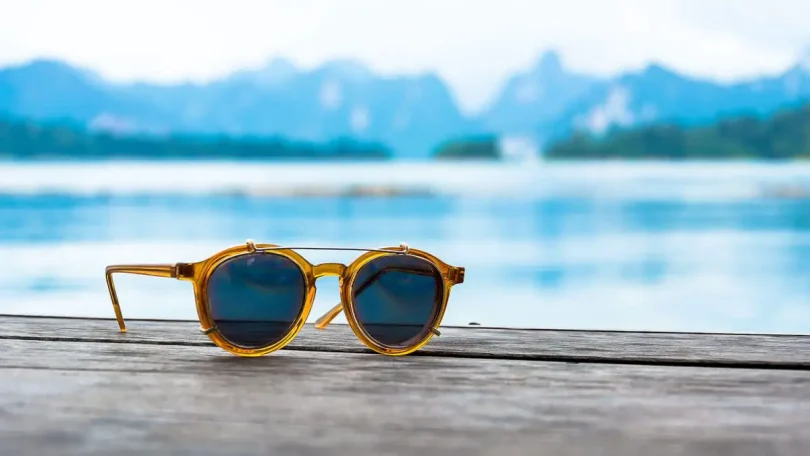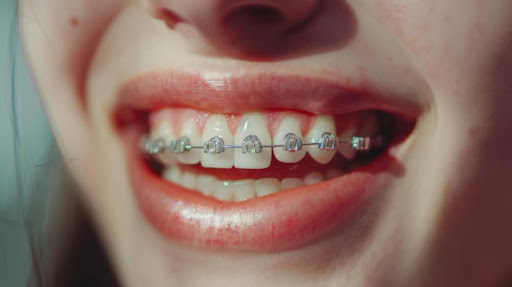When most people think about sunglasses, they think of shade, style, and protection from bright, sunny skies. But recently, another term has entered the conversation around eye health: blue light. You’ve likely heard about blue light in the context of screens — phones, laptops, TVs — and its impact on sleep and eye strain. But did you know that blue light also comes from the sun?
In fact, the sun is the strongest source of blue light in our environment. This has led to a growing interest in sunglasses that block blue light — not just UV rays — as a way to protect our eyes more completely. But do you really need sunglasses that block blue light? Or is it just another trend?
Let’s take a closer look at what blue light is, how it affects your eyes, how much of it comes from the sun, and whether it’s worth choosing sunglasses that are specifically designed to filter it.
What Is Blue Light?
Blue light is a type of high-energy visible (HEV) light. It falls at the short-wavelength end of the visible light spectrum, between 380 and 500 nanometers. It’s called “blue” light because of its place on the spectrum, but most HEV light is actually white to our eyes.
Because of its short wavelength and high energy, blue light scatters more easily than other types of light. This is one reason why the sky looks blue — the atmosphere scatters blue light from the sun in all directions.
Blue light is present in both artificial and natural light sources. Our digital screens emit it, and so do LED bulbs and fluorescent lighting. But the vast majority of our daily blue light exposure — around 80–90% — comes directly from the sun.
Is Blue Light Harmful?
This is where things get interesting. Not all blue light is bad. In fact, some exposure to blue light during the day helps regulate our sleep-wake cycles (circadian rhythm), boosts alertness, and improves mood. But overexposure, especially over long periods, may pose some health concerns.
Blue light penetrates deep into the eye and reaches the retina. Over time, some studies suggest that prolonged exposure may contribute to digital eye strain, retinal damage, and even age-related macular degeneration (AMD). This is especially concerning for people who spend hours staring at screens — but sunlight-related blue light exposure may be just as important, if not more so.
Because sunlight contains much more blue light than your phone or computer, your eyes are being bathed in HEV rays every time you step outside without proper eye protection. And since blue light can cause glare and reduce contrast, it may also make it harder to see clearly in bright outdoor conditions.
How Do Sunglasses Block Blue Light?
Most sunglasses are designed to block ultraviolet (UV) rays — particularly UVA and UVB — because those are directly linked to cataracts and other eye conditions. But standard sunglasses don’t always filter out blue light unless they specifically state that they do.
Blue light filtering sunglasses usually use special lens coatings or filters that absorb or reflect part of the high-energy visible spectrum. Some may have a slightly yellow or amber tint, while others appear perfectly clear. These lenses reduce the amount of blue light that reaches your eyes, helping to minimize glare and reduce visual discomfort.
Some polarized sunglasses also help reduce blue light glare from reflective surfaces like water and pavement. However, polarization is more about reducing glare than filtering wavelengths — so while helpful, it’s not a complete solution for blue light filtering.
When Would Blue Light Filtering Sunglasses Help?
If you work or play outdoors regularly, or if your eyes are sensitive to bright light, sunglasses with blue light protection may offer some clear benefits.
They can reduce the harshness of bright daylight and help improve contrast, making it easier to see clearly in sun-drenched environments. This can be particularly helpful for people who drive frequently, spend time on the water, or work in open outdoor settings. For example, anglers and boaters often experience a double-hit of blue light — from both direct sunlight and its reflection off the water. In these situations, reducing blue light can significantly improve visibility and reduce eye strain.
People who are prone to headaches, migraines, or light sensitivity may also benefit from sunglasses that block blue light. Some users report fewer symptoms when they use HEV-filtering lenses in bright conditions.
It’s also worth considering for children, teens, or anyone who spends long hours outdoors. Their eyes are still developing and may be more vulnerable to light-related damage over time.
There’s still some debate in the scientific community about exactly how harmful blue light from natural sunlight is compared to UV rays, but many experts agree that extra filtering is a useful precaution — especially since it comes with virtually no downside.
Are There Downsides to Blue Light Filtering Sunglasses?
There aren’t many drawbacks, but there are a few things to keep in mind.
Some blue light filtering sunglasses have a yellow or amber tint that slightly alters color perception. While this usually improves contrast, it may not be ideal for tasks that require perfect color accuracy, like photo editing or graphic design. However, many modern lenses are nearly clear and avoid this issue altogether.
Another consideration is that not all blue light blocking sunglasses are created equal. Some offer minimal filtering — just enough to make marketing claims — while others are engineered for true high-energy light protection. It’s important to buy from a reputable brand that discloses its lens specs and filtering capabilities.
Faded Days Sunglasses offer several models that combine blue light filtering with full UV400 protection and polarization, providing a well-rounded approach to eye comfort and health.
What Should You Look for?
If you decide to go with blue light filtering sunglasses, look for lenses that are labeled as blocking HEV light or blue light between 380–500 nm. Also make sure they offer 100% UVA and UVB protection (UV400), which remains the most important feature for long-term eye health.
Polarized lenses are a plus, especially for driving and outdoor sports, but they aren’t a replacement for blue light filtering — they serve different purposes.
And as always, consider lens clarity, durability, and fit. The best protection means little if the glasses are uncomfortable or sit unused in a drawer.
A Smart Extra Layer of Protection
To conclude, sunglasses are your first line of defense against the sun’s harmful effects on your eyes. While UV protection has been the gold standard for decades, growing awareness around blue light is expanding the way we think about complete eye care.
Blue light filtering sunglasses may not be essential for everyone, but they offer clear advantages for people who spend a lot of time in bright, reflective environments or who are particularly sensitive to glare and visual fatigue. With so many affordable and stylish options available, it’s easier than ever to add this feature to your daily eye protection routine.
Think of it as a smart upgrade — not just for your vision, but for your long-term comfort and clarity. Your eyes are with you for life. They deserve the best protection you can give them.






